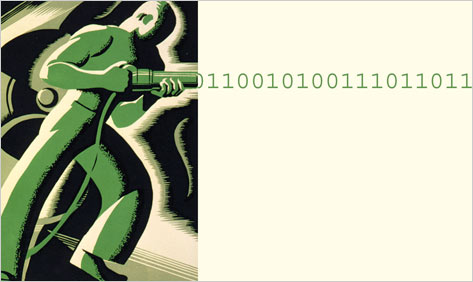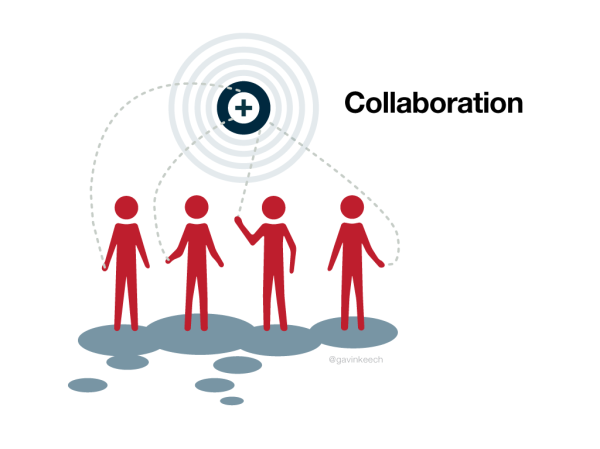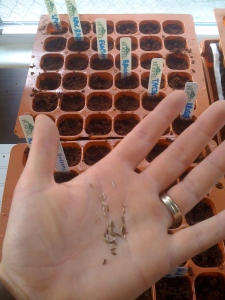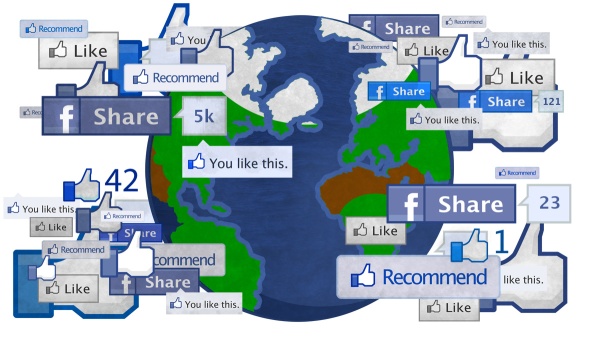David Kirkpatrick, author of The Facebook Effect, prognosticates, “Just by increasing the efficiency of communication and reducing friction in relationships between people, particularly on a global basis, it will lead to a more integrated sense of humanity.”
Venessa Miemis
10 Projects Moving Us Towards a Superfluid Economy
 Over the upcoming months leading up to the Contact Summit in October, I’ll be highlighting various projects and initiatives working to construct a globally networked society. As humanity and technology co-evolve into higher orders of complexity, it can be said that social media is now facilitating the emergence of new forms of culture, commerce, and governance. We want to bring attention to the great and liberating stuff that’s happening, and encourage connections, conversation, and collaboration.
Over the upcoming months leading up to the Contact Summit in October, I’ll be highlighting various projects and initiatives working to construct a globally networked society. As humanity and technology co-evolve into higher orders of complexity, it can be said that social media is now facilitating the emergence of new forms of culture, commerce, and governance. We want to bring attention to the great and liberating stuff that’s happening, and encourage connections, conversation, and collaboration.
The past few weeks have been focused on technology infrastructure, starting with the Towards A Distributed Internet post and the resource list of mesh networks, and continuing on with the formation of a Next Net google group that’s thriving with over 90 members already!
We’ll continue to circle back and revisit conversations and progress, but for now I’ll move on to another hot topic: money and value exchange.
Program or Be Programmed: 10 Commands for a Digital Age

Thanks to digital technologies and networked activity, we’re living through a global transition that is redefining how culture and commerce operate. We’re presented with the opportunity to be active participants in this process, steering ourselves into new modes of civilization, verse being just passive spectators. But if we don’t understand the biases of the tools and mediums we’re using, we’ll risk being slaves instead of masters.
This is not the first time this has happened, but it may be the most significant one so far. Every media revolution has given the people a sneak peek of the control panel of civilization, and a chance to view the world through a new lens. When humans developed language, we were able to pass on knowledge and experiences, and allow for progress. We could both listen and speak.
Alternative Currency Startup in Search of CEO
“If you could devise a better system of money than what we have now, to be more fair and equitable, how would you do it?”
This was the question Ammar Charani asked nobel winners, academics, and leaders in economics, business, permaculture, and finance in order to get a grasp on our economic future. The inquiry inspired him to to build a community platform for exchanging goods and services with an alternative currency, and now the search is on for a seasoned CEO to take the product to market.
“Think eBay meets Groupon meets Berkshares,” I was told in the email notifying me of this opportunity.
With an advisory board that includes complementary currency advocates Bernard Lietaer and Margrit Kennedy, as well as experts in investment banking and electronic commerce, I’m intrigued to see what they roll out.
When Futures Thinking Meets Design Thinking

The business world has been quick to try and implement design thinking in hopes of stimulating sweeping organizational change and innovation, only to abandon it and return to old practices when it doesn’t “work.” Is design thinking nothing more than a poorly defined gimmick, or are people just missing the big picture?
Perhaps a part of the problem is that design thinking is more than just a set of tactics to be carried out, but rather a new ecology of mind. While grounded in business-minded rationality and operating within a defined set of constraints, it also contains an emotional/intuitive component that is often lost upon the more traditional thinkers. What this aspect requires is a capacity for switching between multiple perspectives and the ability to understand the world and our relationship to it, and within it, in a different way. Though there are many methods than can help develop this skill, I’d like to discuss an approach that may be unfamiliar to some: Futures Thinking.
What is Futures Thinking?
Futures thinking, or foresight, is a set of principles and practices that can be applied to solve complex problems. It combines data and trend analysis, pattern recognition, intuition, and imagination to envision desirable and sustainable paths of action. Just as Tim Brown distilled the design thinking process to : inspiration, ideation, and implementation, futurist Jamais Cascio described the futures thinking process as: Asking the Question, Scanning the World, Mapping the Possibilities, and Asking the Next Question. It’s an iterative process which helps you consider a range of possible, probably, and preferable outcomes. It’s not predicting the future, but rather taking a structured approach to understanding the potential impacts of today’s decisions and actions.
The Rise of Collaborative Consumption

A few weeks ago, I got a copy of Rachel Botsman’s new book, What’s Mine is Yours: The Rise of Collaborative Consumption.
The general theme of the book is that we’re shifting away from a society of hyper-consumption and equating personal self-worth with amount of material good accumulated, and instead to a world where our ability to access and exchange resources, develop a reputation, and build community and social capital takes precedence in how we choose to express who we are and what we choose to define us.
Conceptual Framework for Online Identity Roles

I just wrapped up a final project for an aesthetics course this semester, the assignment being to create a “Database of the Self.” I chose to make the database as a representation of the roles we play in terms of how we interact with information online. The roles are overlaid on a panarchy, which shows a visualization of adaptive lifecycles. Though the evolution of every idea or meme won’t necessarily follow this specific path, (it may in fact be rhizomatic, with multiple feedback loops), this begins to flesh out what we become as nodes within an enmeshed series of networks.
Guidelines for Group Collaboration and Emergence

I’m in the middle of taking a course on Virtual Learning Environments (syllabus here), and reading a few chapters from Adaptive Software Development by Highsmith. It approaches the team-building and collaboration process from the perspective of complex adaptive systems theory, and contains some interesting insights in evolutionary development and creating environments where emergence can occur. I’ve created a summary of a chapter that I’d like to share, as I think it can be valuable for many of us, and specifically for the community of practitioners around the junto concept.
Collaboration is an act of shared creation or discovery. (schrage89)
Junto is Born!
Many of us have been inspired by the cooperation meme lately, and it appears that our collective spirit has given birth to Junto!
In case you haven’t been following along, Junto is a concept we’ve been discussing for a global communications and collaboration platform. It starts with a simple interface, combining video chat with a text box and a twitter backchannel, all streaming in public, real-time. It could be used for any number of projects or goals – organizations could use it for open innovation or to show how they are taking social responsibility in the world, groups with similar initiatives could use it for huge group discussions and meetings in order to accelerate the process of organizing and taking projects from idea to action, and individuals could use it to engage in dialogue and create shared meaning and shared understanding across geographic and cultural barriers. For more context, check out the original post here.
Maintaining Your Garden of Trust
This morning I was getting some seeds started for my garden, and I was reminded of a tweet from a few weeks ago where I said something to the effect of ‘customer service is now more like gardening and less like hunting – nurture relationships.’ Well, the SCRM crowd (social customer relationship management) pushed back. [@wimrampen @grahamhill @ekolsky @myjayliebs @mkrigsman @SameerPatel @pgreenbe @kitson, you know who you are!] They said this wasn’t the case, and that studies had shown that customers don’t really want a relationship with a brand. To me, “relationship” doesn’t have to mean I’m going to have you over for dinner. There are levels. It can just mean that I will recommend you to a friend. I let it go at the time, but I want to go for Round 2.
I think that gardening is as powerful a metaphor as any for the life-cycle of a process, and I do see a correlation between what it takes to grow a garden and what it takes to build trust with a potential customer, client, or future alliance. Here’s how I see it:

It starts with a seed. Tiny enough to get lost in the crease of your palm, seemingly insignificant on it’s own, it’s value not immediately apparent. This is that new contact, that new Twitter follower, yourself.
